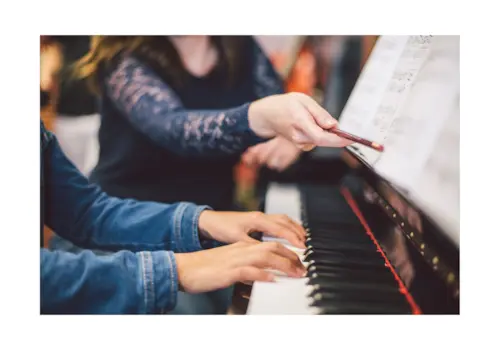We took Roland’s flagship model from its LX700 range for a spin
PRICE:
From £3,720
MAIN FEATURES:
✔ Action: Grand Hybrid Keyboard, wood and plastic hybrid structure that is progressively weighted with escapement
✔ No of Internal Sounds: 324
✔ Polyphony: Limitless
✔ Speaker System: 8-speaker multi-channel system
✔ Pedals: New responsive damper pedal, soft pedal, sostenuto assignable to alternative functions
✔ Finishes: Polished ebony, polished white and charcoal black
✔ Extra features: 10-year warranty, Bluetooth audio, Bluetooth MIDI, Twin Piano mode, USB to computer, Piano Designer and Piano Every Day apps

The LX708's sleek design is sure to catch the eye of many budding pianists
One thing you can guarantee with Roland is that it will always be leading the way in terms of creating and introducing brand-new digital piano technology. All you have to do is look at the Japanese manufacturer’s history:
In 1974, in its very early days, Roland introduced the first ever touch-sensitive keyboards. This gave its pianos the capability of replicating the dynamics of an acoustic piano.
In 1983, Roland founder Ikutaro Kakehashi co-developed MIDI technology alongside Dave Smith, founder of the American synthesizer company Sequential. Roland was subsequently the first manufacturer to introduce digital pianos with MIDI in-built, with the Roland HP-300 and HP-400 series.
And once again, unsurprisingly, its flagship model from the LX700 range pushes the boundaries of digital piano technology. The LX708 model that we are looking at comes in at around £3,720. It’s a hefty investment for a digital piano, but one we think is worth it if you want the best of the best.
Why should I spend my money on this piano?
We’ve picked out four big reasons why the LX708 is worth your investment:
1. Using Modelling Technology instead of sampling
It's common practice these days for piano makers to sample real acoustic pianos when designing their digital pianos. This would normally consist of recording every note on the keyboard at different lengths and volume levels.
However, Roland has gone a different route and instead created Pure Acoustic Modelling Technology for their LX700 series.
Why?
Simply because sampling alone has limits.
This Pure Acoustic Modelling Technology uses two powerful behavioural modelling chips to achieve a similar deep level of communication between the piano and the player. The modelling engine reacts immediately when the keys are pressed, taking into account exactly how you are playing the keys and thus recreating the process of an acoustic piano in real time.
The real feel of this piano is apparent almost immediately, and the technology in place massively improves the player experience in comparison to other manufacturers. Once again, Roland has shown that it's at the very heart of digital piano innovation.
2. Unrivalled eight-speaker system
If you are serious about investing in a high-quality piano that sounds like an acoustic yet has the benefits of a digital, this model should be high up on your list. What strikes you first when you begin to play this piano is the effects of its eight-speaker sound system. It is the most advanced speaker system we have seen on a digital piano for a long time. You feel completely surrounded with sound, and not just by the basic sound of each note that resonate from the speakers in the piano’s cabinet.
You’ve also got top-mounted speakers that reproduce the resonance of the piano’s frame. In addition, you’ve got a pair of nearfield speakers that project additional sounds such as the noise of the hammers hitting the strings. This represents a big difference compared to the speaker systems in many other digital pianos.
One thing we all love about acoustic pianos is the sounds created by the body of the piano itself that occur when the note’s soundwaves bounce off the surfaces. The speakers also have the capability of funnelling which frequencies of sound come out of which speakers, further adding to the manufacturer’s impressive capabilities of recreating that acoustic sound. These details are a very warm welcome.
3. Unique key vibration
Noticed on an acoustic piano that the keys vibrate under your fingertips when you play them?
Noticed that this doesn’t normally happen on a digital piano?
It does on the LX708, and this is thanks to the piano's combination of Pure Acoustic Modelling Technology and Haptic Feedback System.
For us, this was the feature we were most excited to try out beforehand. We hadn’t previously seen it on many other digital pianos. When we did finally get to give it a test run, we weren't disappointed.
It's a feature that adds immensely to the playing experience. The LX708 lets you pick from three levels of key vibration. We of course picked the highest level to really feel the effects. To feel that vibration through your fingers, to feel the music, is an unrivalled feeling.
The Roland LX708 is available in polished ebony, polished white and charcoal black
4. Ability to personalise the sound to your taste
The LX708 comes with a feature called the PianoDesigner App, which you can control from your smartphone device or direct from the piano.
PianoDesigner gives you the option of personalising the sound of the piano right down to the smallest of details. These include:
- Lid position
- Parameter of strings
- Parameter of hammers
- Pitch
- Ambience
- Temperament
- Tonal character
- Pedal settings
If you are a pianist that likes to get involved with the more technical side of the piano’s sound, then it’s likely you’ll get a lot of use out of this feature. Thankfully it’s also very easy to use. After flicking through all of the app’s possibilities, we created our own unique piano sound in a little over 10 minutes.
After a thorough look at this piano, this is a model we think is well worth the investment and, with a free extended 10-year warranty, you are more than covered in the case of any accidents or problems. For a full breakdown of the LX708’s specifications, click here.







